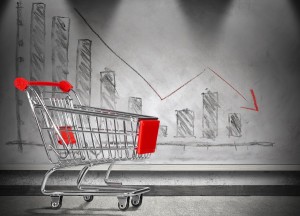— March 28, 2019
For most companies, supply chains consist of numerous partners that manufacture products in siloed environments. When you fail to provide these parties with the necessary visibility, however, it becomes more difficult to adjust to customer demands and maintain integrity.
Because of the number of supply chain variables at play, many companies struggle to streamline this disorganization — particularly smaller businesses with limited resources. There was no “silver bullet” solution for these issues until recently, which left companies with two options: cobble together several inefficient tactics to manage everything, or simply hope for the best and expect the worst. Common sense indicates that neither of those is an ideal approach.
Thankfully, businesses now have a viable alternative: blockchain governance. While blockchain is primarily known as the tech behind bitcoin and various other cryptocurrencies, the potential applications of blockchain technology far exceed the world of finance.
Because its networks are decentralized and contain severely low fault tolerance, blockchain can track, record, and share data between several parties in real time. The result is a solution perfectly suited to follow a product at every stage of production and enable companies to make smarter decisions surrounding it.
Responsible sourcing, sustainability, and transparent business practices are becoming prominent elements of consumer buying decisions, but these values often clash with the realities of a convoluted supply chain. Blockchain governance, however, offers a new way to satisfy customer demands and create more sustainable business practices simultaneously.
Blockchain Is Better for Business Wellness
Blockchain governance is distinctive in its ability to inject transparency and visibility into every step of a product’s life cycle. From production to consumer velocity, blockchain can monitor everything. This increased clarity makes it easier for producers, farmers, and manufacturers to know exactly what’s required of them every step of the way.
Industries whose quality might regress through several phases of development have welcomed this enhanced accountability with open arms. Take, for instance, textile and apparel brands. Providers often suffer breakdowns in quality and values because of the responsibility that accompanies handling the various parts of a supply chain. Because there’s no established way to govern or monitor every phase of a supply chain, it’s easy for integrity to fall by the wayside.
Quality concerns aren’t the only potential miscues that stem from poor supply chain management, though. Look no further than the notorious case of Foxconn, best known for its role in assembling Apple products. Back in 2010, undercover reporters exposed the company’s poor working conditions — not only were employees underpaid and overworked, but 14 workers in its Shenzhen, China-based factory took their own lives.
While Apple pledged to improve the oversight of its manufacturing partners, Foxconn’s reputation as an unhealthy working environment persists. Another employee committed suicide on factory grounds this past year; rather than fix the root problems, the company has launched a three-phase strategy to automate all operations at its factories.
What’s so upsetting about these situations is that, with greater governance, companies likely could have prevented them. The problem is that there hasn’t been a satisfactory solution for companies that wanted to regulate supply chains from source to store. The implementation of blockchain seems to be the solution to problems that have plagued us for years.
How Blockchain Governance Can Solve Supply Chain Woes
So how, specifically, can blockchain improve a business’s bottom line? While the technology has not yet realized its full potential, here are three ways blockchain governance can improve your supply chain — and your business — right now:
1. Reduced fraud
Throughout a supply line, there are many incidents of fraud or other defects that companies could prevent if the process were more transparent and traceable. A lack of transparency and accountability from suppliers can lead to major repercussions, a lesson that Takata Corporation learned the hard way.
The Japan-based automotive parts vendor distributed faulty airbags without any supply chain oversight, negligence that eventually led to 17 deaths and more than 180 injuries. Despite recalling billions of airbag inflators, Takata was forced to file for bankruptcy shortly after that.
For situations like Takata’s, blockchain governance of some kind could have curbed the problem before it continued. Whether it’s a three-party consensus or an internal governance team, enable transparency that prevents internal breakdowns from turning into external perception problems.
2. Better insight into demand
Matching supply to demand is not an easy task. Blockchain governance can provide more transparency into consumer demand, ensuring your supply chain can ramp up to meet product velocity or lower waste when there’s no demand.
Because so many supply chain elements operate in the dark, there’s relatively little reliability in the process. Big firms tend to procure their goods in bulk but pay manufacturers slowly, which sometimes contributes to struggles (or stops) in production.
Nonprofit governing body Sweetbridge Foundation sees the need to shed light on this problem. The foundation has adopted blockchain as a way to create a “real-time auditing solution” that will help make this process more transparent and better match supply from small manufacturers with demand from big businesses. A firm grasp on demand will prevent companies from exhausting their resources in some areas and allow them to apply those resources in areas of need.
3. Better accountability for suppliers
In 2016, the BBC investigated a case of Turkish sweatshops that hired Syrian refugees to make clothing. The sweatshops supplied clothing to major retailers like Marks & Spencer and ASOS, though the retailers pled ignorance and said the supplier was an unapproved subcontractor.
Blockchain technologies could have sussed out such a mistake and allowed those companies to hold their suppliers’ feet to the fire. A solution like the Internet of Things uses blockchain records to protect supply chain transactions in a secure ledger. This ensures records are beyond the control of any one individual or entity, preventing the obfuscation or manipulation of information.
The scope of these issues might seem too ambitious for blockchain to solve adequately. But governance brings accountability by ensuring that members of a supply chain adhere to a business unit’s best practices and compliance standards. This can improve both the quality of workers’ lives and the products themselves, leading to a more efficient, safe, and simple way of running your supply chain — and your company.
Business & Finance Articles on Business 2 Community
(64)
Report Post



